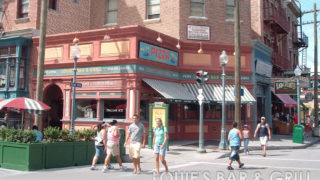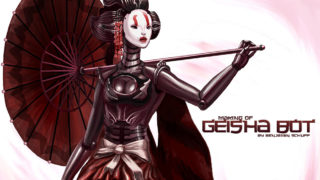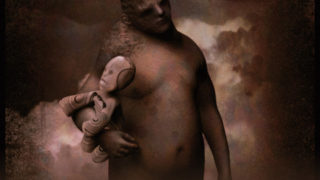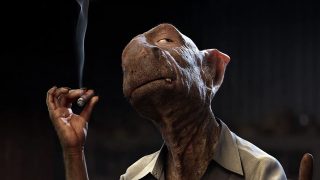
Making of Tiger Zoo
Using a simple polygon plane and extruding it according to the global shape, I created the head first than moved to the rest of the body leaving holes when the legs where to be connected.
IntroductionPhotography has always inspired me, I love expecially shots of nature and wildlife from magazines like The National Geographic. During a recent travel in the South East of Asia, I visited Sriracha Tiger Zoo in Thailand and I took many photos of all the animals living there. There is no better reference material to use than the one you personally create;) From crocodile farm with over 100.000 crocodiles to elephants and of course Tigers. I’ve never seen in my life so many Bengal tigers (more than 200) all in one single place, it was amazing. As for all my 3D models I didn’t want to create it only for trying a realistic render but I also wanted it for further animation purpose, that’s why I wanted to do all the steps ranging from the standard lowpoly model till the posed highpoly renders. I used Maya 8.5 for the modeling, MentalRay for rendering, Photoshop for creating the textures and Shave and HairCut for the fur of the head. |
 |
ModelingUsing a simple polygon plane and extruding it according to the global shape, I created the head first than moved to the rest of the body leaving holes when the legs where to be connected.
This is my preferred modeling tecnique because keep on switching between the four views I can have a good control over the step by step modeling process. At this point I checked the geometry topology in order to obtain quads and loops. Finally I modeled the gum, tongue and teeth. In addition to the photo taken at the Zoo I used some scientific skeleton references found online. |
I modeled each tooth starting from a polygonal box, pulling vertices and pushing vertices.
I ended up with 4030 polys for the main tiger mesh and 3166 polys for eyeballs, teeth, gum and tongue. |
|
I than had to start the UV mapping process before adding details. I needed to have a mirrored UV layout, in order to do that I first made the UVs for half of the model than I duplicated the other half and mirrored the UVs flipping them. I used various projection to make the Uvs using planar and cylindrical mapping tools.. For some parts like ears and portions of the chest I made some detached projection in order to avoid some stretching when I had to apply the textures. |
I used a simple checker, applied to a Lambert shader, to check the overall process whilst tweaking the UVs. After the Uvs I made a polysmooth of the model and started using the Maya Sculpting tool to achieve some detail playing with punch, pull, smooth and the very usefull relax tool (new addition in Maya 8.5). |
 |
 |
TexturingI believe that the texturing part is extremely important as the majority of the final effect is created by the textures. I decided to go for a 4k resolution map wich I think it was good enough to achieve the textures details such as the fur stripes. I used the clone tool as well as custom brushes, always switching between Maya and Photoshop to check how the textures behaved on the model.
Once happy with the Photoshop work I moved on adjusting the seams. The texture’s seams were created by the edges where the UVs were cut during the mapping process and I used Maya 3D Paint tool to correct them, using especially the clone tool. |
I finally back in Photoshop to create the other maps: specular, bump and diffuse. I used a Blinn shader for the body, a Phong for the eyeballs and a Binn for the teeth. |
Posing the tigerI decided to go for a pretty classic pose, with the tiger laying on the rocks. In order to do that I first created a rock starting from a polygonal plane making it pretty dense, and scuplting it using the sculpting tool to achieve the desired shape. I made a UV projection and applied a texture created from my photos. For the background I used a simple plane with part of the same texture applied. I build a simple rig for posing the tiger. I than adjusted the mesh to achieve the different muscles definition given by the actual pose. |
|
 |
 |
Shave and HaircutIt was the first time I was using shave and haircut and I immediately noticed how powerful is this tool. I decided to put the fur only on the tiger’s head and in some side parts of the legs and paws because for the rest of the body I thought I could achieve a pretty good fur simulation with the only using of the textures. I created a total of six hair systems .Now I will focus on the main head fur, also considering that for the other hair systems I used the same procedure I am going to explain. I selected the head’s faces excluding the nose, inside of the mouth and eyes parts and I went to Shave —> Created New Hair. The first time I did that, I noticed that the hair normals was pointing inside of the mesh so I reversed the normals and created the hair system again. All was fine this time. Using the Brush tool I started scaling the hair according to the photos and when happy with the hair length I used "Recomb Hair". This command made the hair comb nicely around the head. The only thing left to do was to use the Translate and the Puff tool to fine tuning the hair style.
|
Than in the Material Properties of the Hair system I assigned the tiger’s color texture to the Tip and Root Colors and the specular to the specular field. In the screenshot you can see my settings for that hair system. To be able to render the hair out using MentalRay I went to ‘Shave Globals’ and selected ‘Hair Primitives’ as Hair Render Mode. I also enabled the Irradiance in the ShaveGlobals —> MentalRay tab in order to involve the hair’s shader in the Final Gathering process. |





















